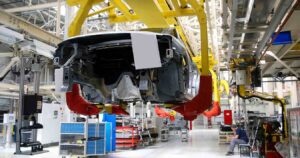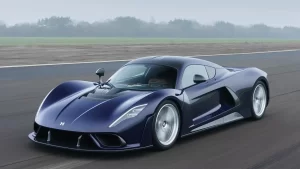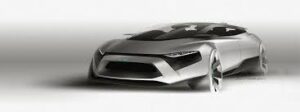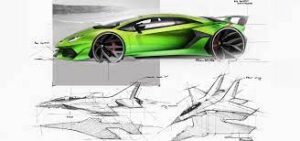There are several current trends in car design (CDS) that are shaping the appearance of new vehicles. These trends include the use of new materials, the integration of advanced technologies, and the evolution of aesthetic styles.
Table of Contents
ToggleCar Design: New Materials
One of the most significant trends in car design (CDS) is the use of new materials. Car manufacturers are increasingly using lightweight and durable materials, such as carbon fiber and advanced alloys, in order to reduce a car’s weight and improve its performance.
Car designers use a wide range of materials in the design of cars, including metals such as steel and aluminum, as well as plastics and other composites. These materials are chosen for their strength, durability, and ability to withstand the forces exerted on a car during operation.

Additionally, car designers must consider the weight of the materials they use, as this can affect the performance and fuel efficiency of the vehicle. Some other materials commonly used in car design include glass, rubber, and fabric for the interior.
Car Design: Technologies
Car designers use a variety of advanced technologies in their work, including computer-aided design (CAD) software, which allows them to create detailed 3D models of car parts and systems.
These models can then be tested virtually to ensure that they meet the necessary performance and safety standards.
Other technologies used in car design include computer simulation and analysis tools, which allow designers to test the aerodynamics and structural integrity of a vehicle, as well as materials science and engineering techniques, which are used to develop new and innovative materials for use in car design.
Additionally, car designers may also use virtual and augmented reality technologies to create immersive experiences for customers and to help with the design and engineering of vehicles.
This has led to the development of cars with sleek and modern designs that are both strong and efficient.
Another trend in car design is the integration of advanced technologies. Car manufacturers are incorporating a variety of new technologies into their vehicles, including self-driving and semi-autonomous systems, advanced infotainment systems, and new safety features.
These technologies are helping to make cars more convenient, connected, and safe.
Car Design: Aesthetic Styles
A third trend in car design is the evolution of aesthetic styles. As car manufacturers continue to experiment with new materials and technologies, they are also exploring new design languages and aesthetic styles.
Car design, like all forms of design, is influenced by aesthetic styles and trends. These styles can be divided into several broad categories, including traditional, modern, and futuristic.
Traditional car design is characterized by classic, elegant lines and a focus on luxury and refinement. Modern car design, on the other hand, often incorporates more dramatic and bold lines, as well as advanced technology and cutting-edge materials.
Futuristic car design, as the name suggests, is focused on creating vehicles that are ahead of their time, incorporating advanced technology and radical design elements.
Ultimately, the aesthetic style of a car is a matter of personal preference, and different designers and car manufacturers may have different approaches to car design.
This has led to the development of cars with more daring and innovative designs, which challenge traditional notions of what a car should look like.
Overall, these trends are shaping the appearance of new cars, and are helping to create vehicles that are more advanced, efficient, and stylish than ever before.
Related Posts and Links
- Follow These Steps to Protect The Paint Of Your Car
- 10 Incredible Lambo (Lamborghini) Design and Features
- Car Design of the Future: 10 Car Trends in Automotive Design – TC























